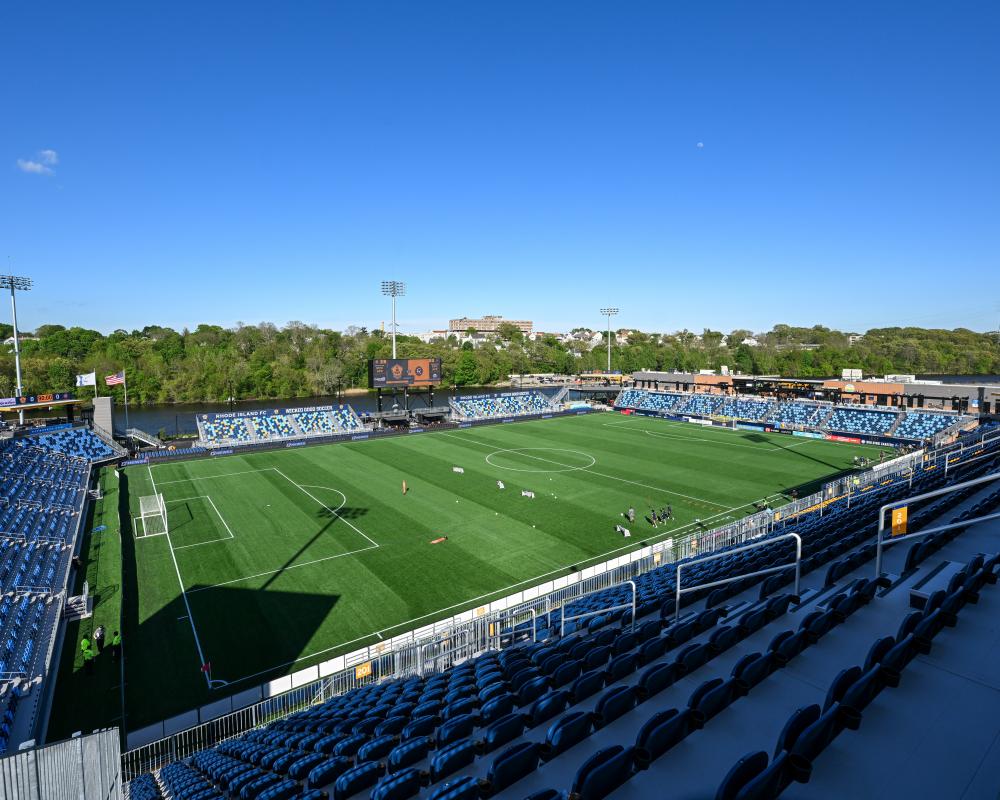It was in a moment of crisis, just after the turn of the century, that those running American club soccer appear to have realised that they were not in the business of sports, but in the business of real estate. Today, the nation’s successful clubs and leagues (which can merely mean the ones that didn’t collapse and fold), tend to have something in common: A home stadium that they control. By building or owning the place where the soccer is played, the franchisees or operator-owners, and by extension the leagues themselves, found a way to grow the sport in the US in a more sustainable, stable manner.
It’s a dynamic that has long since taken root in MLS, where 23 of the league’s 30 teams play in soccer-specifc stadiums. But, with the World Cup on the horizon, a real legacy within US soccer is already being built in the shape of striking, sensibly sized soccer venues for smaller teams, including many in the lower divisions.
Advertisement
Related: USL adds ex-Carlyle Group CEO as vice chair with eye toward new first division
Women’s soccer has been an integral part of this stadium boom. The NWSL and the USL Super League, already operate as parallel Division I leagues, which in some ways has paved the way for USL to attempt the same in the men’s game. Many women’s teams share soccer-specific stadiums with the men, but in 2024, Kansas City Current’s CPKC Stadium became the first in the world to be built specifically for a women’s soccer team. Teams like Tampa Bay Sun (USL) and Denver Summit FC (NWSL) have plans to do the same.
On the men’s side, US Soccer’s pro league standards have minimum requirements for teams wanting to participate in a top-tier league, which includes a minimum stadium capacity of 15,000. This has led to teams revamping existing facilities, or building brand new ones, as they make their case to be among the first group of teams to take a place in a new Division I.
In the United Soccer League (USL), the organization that oversees most lower-division soccer in the US, stadium building has been such a prominent part of plans that the league has its own chief real estate officer. The league has taken on new investment with an eye to expand its real estate portfolio, especially important given its plans to launch a D1 league in 2028 and institute promotion and relegation.
Advertisement
The issue of promotion and relegation is often looked at through rose-colored glasses, focusing on the idea of teams growing, improving, and moving up the leagues, but often ignoring those going in the other direction. A pro/rel system will only work if the teams dropping down a division, or even two, can survive such a fate and remain relevant and stable within their markets. For proof of how a stadium can improve those prospects, one need only look at MLS.
From 2003, when an original 1996 MLS franchise, LA Galaxy, moved to a new stadium now known as Dignity Health Sports Park, MLS’s expansion was as much about new stadiums as it was new franchises. When the new teams began to arrive in 2005, they often did so with soccer-specific stadiums or at least plans for one.
“The league could have disappeared, and spent 12 to 15 years worrying about collapsing more than growth,” says David Gass, founder and host of the Soccerwise podcast. “But the way you ensure that you exist is by having a physical representation of yourself, and building a stadium means ‘we’re going to be here, we have this building, we are part of this city, we have a physical footprint.’
Advertisement
Related: Manchester United are importing a sinister US tactic: Public money for stadiums
“I think that’s where we’re at now. A soccer team is going to play in Nashville, for example, for the next 20-plus years, no matter what happens, because the building has been built, the facility is there, and the fan engagement has been created.
“Let’s say something happens to MLS or Nashville SC, someone else is going to take over that space, the same as we’ve seen in minor league baseball and college football, and I think that’s a pretty big step to take in terms of ensuring the future.”
Only three MLS teams (the New England Revolution, New York City FC, and Chicago Fire) are playing in stadiums that feel like lodgings rather than homes, and New York and Chicago have plans to move into their own soccer-specific stadiums in 2027 and 2028, respectively. Chicago Fire’s previous attempt at such a move was an example of what can go wrong, but the downtown location of the proposed site at South Loop in the heart of the city should mean there is no repeat of the problems encountered out in Bridgeview.
Advertisement
Even some of the teams that play in facilities shared with NFL franchises, like Atlanta, Charlotte, and Seattle, feel more like homeowners than lodgers. “Many in Atlanta think of the Mercedes-Benz Stadium, not as the Atlanta Falcons stadium that they rent to Atlanta United, but as a stadium that was built largely for the World Cup and for Atlanta United,” says John Parker, CEO of Kickback Soccer Media.
“The reason Arthur Blank said he needed it was because he said he needed the World Cup, and Atlanta United, too, and couldn’t do that in the old stadium. It debuted with Atlanta United, and though it’s not soccer-specific, I think you’re going to see more instances where, if the MLS team is really big, the NFL owner is usually the richest guy in town, they’re often going to own the MLS team. I think this is fine, as long as you build it so that it works for soccer, and you treat soccer fans right and not as just second-rate citizens.”
